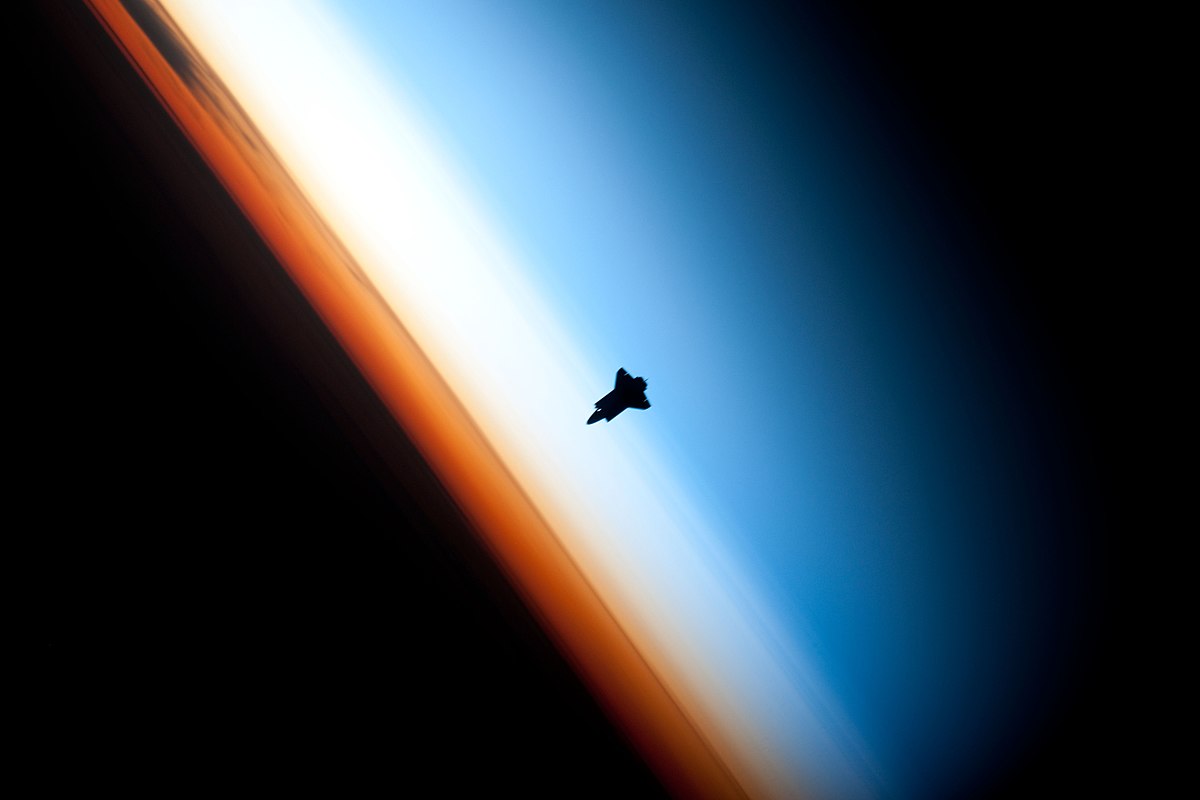Analysis of ‘inaudible’ infrasound high in the stratosphere can lead to improved weather forecasting and climate models, believes Dr Pieter Smets (Faculty of Civil Engineering and Geosciences).
Space Shuttle Endeavour in the stratosphere. (Picture: Nasa)
Geophysicist Dr Pieter Smets, who also works for the Royal Netherlands Meteorological Institute (KNMI), is interested in the climatic conditions in the stratosphere, the atmospheric layer situated at an altitude of between 10 and 50 kilometres. Above 30 kilometres hardly any data are available on wind force and temperature. Climate models and weather forecasts could be improved with more insight in this atmospheric region.
By analysing infrasound that has travelled through these atmospheric layers, one can deduct wind forces and temperatures. Or so concludes Smets who defended his PhD thesis ‘Infrasound and the Dynamical Stratosphere, A new application for operational weather and climate prediction’ last Wednesday.
Infrasound, sound with a frequency below 20 Hertz, is measured with arrays (series) of highly sensitive microbarometers. Sources of infrasound are often large and powerful, like meteors, explosions, ocean waves, earthquakes and nuclear tests. This last source is the focus of a group of KNMI scientists, amongst whom is Smets’ promotor, Prof Läslo Evers.
Dozens of microbarometers have been set up in the Netherlands
KNMI enforces the Comprehensive Nuclear Test Ban Treaty of 1996, which prohibits signatories from testing nuclear devices. Dozens of microbarometers have been set up in the Netherlands for this purpose and in many other locations around the world.
To further refine the analyses, the researchers need to know more about the interaction between the earth’s atmosphere and infrasound. The temperatures and wind speeds at high altitudes can cause distortion. This analysis process can also be turned around; using infrasound to map the upper atmosphere, which is exactly what Smets’s research was all about.
An especially interesting use of the research is the study of sudden stratospheric warmings – dramatic events in which the midwinter stratosphere changes into a temporary summer like situation over the course of a few days. These are important features of the winter atmosphere. Earlier this month, the Netherlands experienced a sudden drop in temperature. This was the result of a sudden stratospheric warming four weeks before that changed the course of the Jet stream, resulting in cold air from Siberia to blow our way.
‘Before climate scientists incorporate these kind of data in their models, we need to do a lot more work’
When can we expect infrasound technology to result in better predictions of these kinds of sudden drops in temperature? Smets tempers expectations. “My thesis contributes tothe development of methods to allow infrasound to be used by weather and climate prediction centres, but before climate scientists incorporate these kind of data in their models, we need to do a lot more work. Scientists would also have to obtain permission from the UN organisation that manages the world covering arrays of microbarometers for the enforcement of the Comprehensive Nuclear Test Ban Treaty to use the microbarometers for climate research. Some high-level diplomatic work still needs to be done to arrange this.”
Smets captured infrasound that was produced by the eruption of volcanoes, amongst which the eruption of the Mount Tolbachi in Russia in 2013. Läslo Evers and Pieter Smets will continue in the same line of work, but use continuous background noise of infrasound created by ocean waves instead.
Do you have a question or comment about this article?
tomas.vandijk@tudelft.nl


Comments are closed.